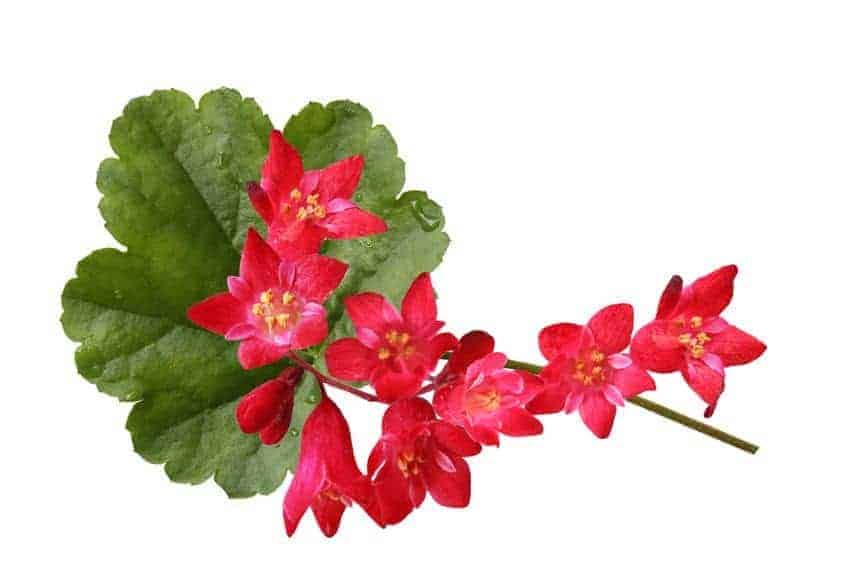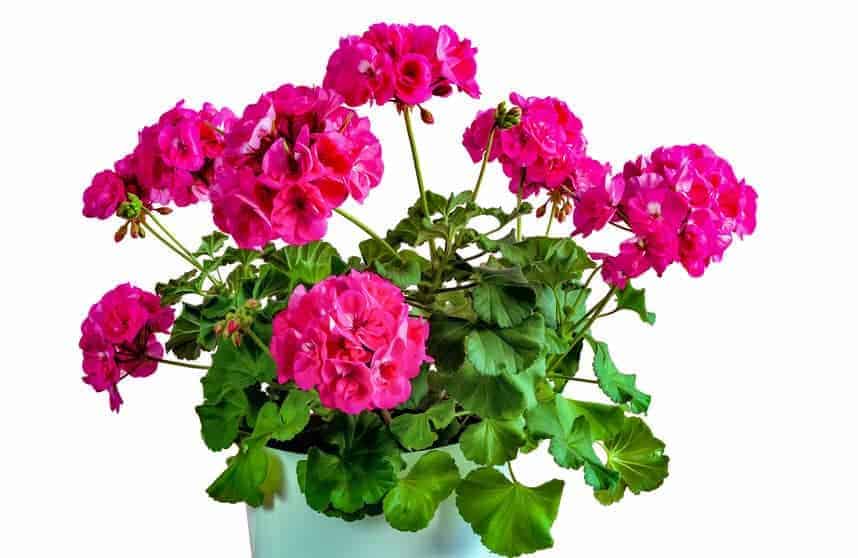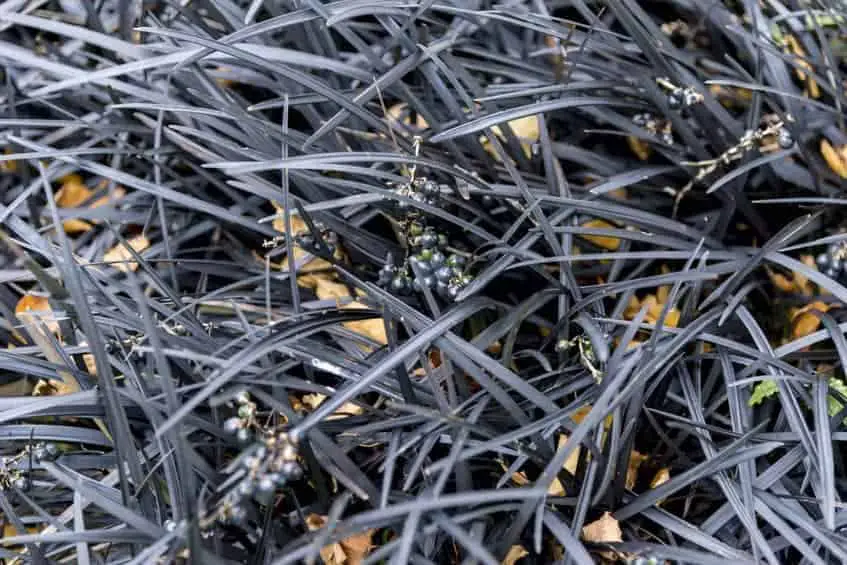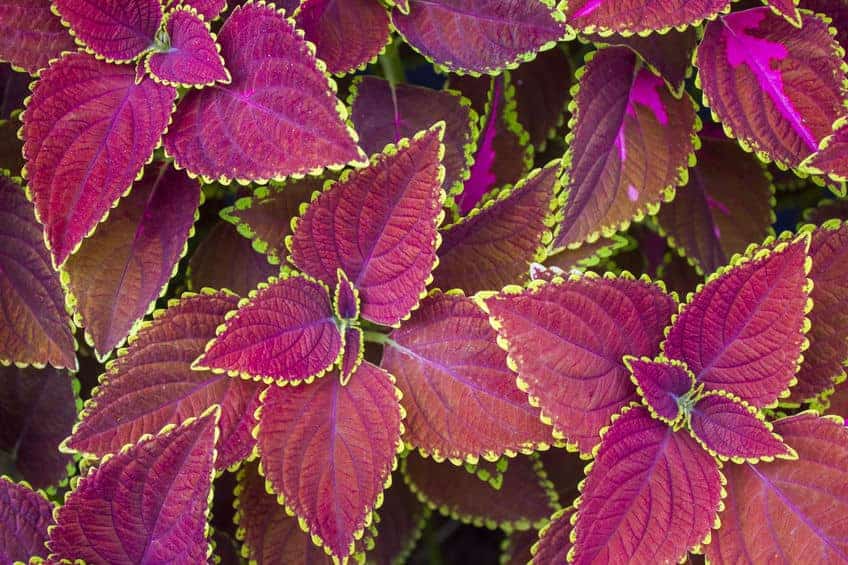While there are many benefits to planting in containers, creating a lovely container garden still requires careful planning. One of your main initial concerns relates to the plants you choose for your containers. Certain species are well-suited for container gardens. For others, that setting is far from ideal.
In general, annual and perennial plants are the best options for container plants as their root systems are much less likely to outgrow the container space. To get you started on a beautiful container garden, here are 10 of the best plants to grow in containers.

- 10 Best Plants to Grow in Containers
- Elephant Ears (Species in the Alocasia, Caladium, Colocasia, and Xanthosoma Genera)
- Coral Bells (Heuchera)
- Daylilies (Hemerocallis)
- Marigolds (Tagetes)
- Fountain Grass (Pennisetum)
- Geraniums (Pelargonium)
- Black Mondo Grass (Ophiopogon planiscapus 'Nigrescens')
- Painted Nettle (Coleus, formerly Solenostemon)
- Sweet Potato Vine (Ipomoea batatas)
- Petunias (Petunia ×atkinsiana)
- Final thoughts on the best plants to grow in containers
10 Best Plants to Grow in Containers
Below are ten of the best plants for container gardens. For each one, we have provided a description of physical characteristics and some general care requirements. Read on to find which one you will use in your next container planting scheme.
- Elephant Ears
- Coral Bells
- Daylilies
- Marigolds
- Fountain Grass
- Geraniums
- Black Mondo Grass
- Painted Nettle
- Sweet Potato Vine
- Petunias
Elephant Ears (Species in the Alocasia, Caladium, Colocasia, and Xanthosoma Genera)

Elephant ears come in many varieties, all of which have massive leaves. As the name suggests, these leaves have a shape that is very similar to that of an elephant’s ear.
Each type of elephant ear plant comes in a distinct color. Some are the typical green you would expect from the average plant. Others show large splotches of red, pink, or white.
These plants fall into one of four genera. Those genera are Alocasia, Caladium, Colocasia, and Xanthosoma. Of the four, Colocasia is the most adaptable as it survives in the broadest range of hardiness zones, including zones 7-12.
All elephant ears have similar care requirements. They can grow in full sun or a filtered light. Their soil should remain moist to mimic the setting of their native range in Southeast Asia.
General Care Requirements
Sun Exposure: Full sun or filtered light
Soil Moisture: Moist
Soil Acidity: Acidic to neutral
Coral Bells (Heuchera)

Coral bells are small perennials that thrive in a shady setting. Despite being very little, these plants have plenty of ornamental value, which makes them one of the 10 best plants to grow in containers.
Each year they put forth clusters of tiny bell-shaped flowers. Those flowers hang from vertical stems that rise above a lovely bunch of green or purple leaves.
Coral bells are cold hardy and prefer a slightly acidic soil. In those conditions, this plant will rise to a mature height of around one foot in most cases.
As a great addition to any shade garden, the textured foliage of coral bells is one of its most attractive features. Considering the size, you have the opportunity to combine this perennial with other shade-loving plants in a single container.
General Care Requirements
Sun Exposure: Full sun to full shade
Soil Moisture: Medium moisture
Soil Acidity: Slightly acidic to neutral
Daylilies (Hemerocallis)

Daylilies are one of the most popular perennials around, and they have also earned a spot on our list of the 10 best plants to grow in containers. Their widespread use arises from the fact that these plants have reliable blooms and can tolerate some harsh conditions.
Since gardeners have fallen in love with daylilies, countless cultivated varieties have come into existence. Those cultivation efforts now mean that you can find a daylily in nearly any color you like.
To add to the joy of growing daylilies, there are many cultivars that will bloom multiple times in a single season. These flowers, along with a dense set of elongated foliage, make for a very appealing plant.
Daylilies grow best in the full sun and are tough enough to survive drought. You’ll also have no problem dividing them when they begin to expand beyond their growing area.
General Care Requirements
Sun Exposure: Full sun to partial shade
Soil Moisture: Medium moisture to moist
Soil Acidity: Acidic to alkaline
Marigolds (Tagetes)

When it comes to annual plants for container gardens, marigolds are one of the best options. They give a burst of color to any garden and can grow through nearly every region of the United States.
Many are familiar with the pleasing petals of marigold flowers. Those striking blooms stand out with a bright yellow to burnt orange color.
If you are interested in planting marigolds in your container, the best time of year to do so is in mid to late spring. Then, after about eight weeks, the first flowers will arrive.
While there are many varieties of marigold, French marigold, signet marigold, and African marigold are some of the most common options. Most marigold species need well-drained soil and enjoy plenty of sunlight.
General Care Requirements
Sun Exposure: Full sun to partial shade
Soil Moisture: Medium moisture to moist
Soil Acidity: Neutral
Fountain Grass (Pennisetum)

If you love adding captivating textures to your container gardens, fountain grass is one of the 10 best plants to grow in containers. In the later stages of the growing season, feathery spike-like flowers cover this perennial, shimmering with every passing breeze.
To your benefit, fountain grass is a low-maintenance plant. Its resilience allows it to withstand polluted air and adapt to both wet and dry soils.
Fountain grass takes on a rounded form that reaches little more than two feet in height and width. This form consists of thin arching leaves that are flexible to the touch.
Often, this plant looks best when gardeners plant it as a mass. But fountain grass can stand alone as an individual accent plant as well.
General Care Requirements
Sun Exposure: Full sun
Soil Moisture: Medium moisture to moist
Soil Acidity: Acidic to neutral
Geraniums (Pelargonium)

Although geraniums are technically perennial plants, most gardeners in the United States treat them as annuals. The reason is that geraniums often fail to survive the winters in colder climates.
Regardless of the classification, geraniums give impressive blooms that are colorful and fragrant. For the best growth, you should deadhead these flowers once they are spent.
Full sun and well-drained soil are must-have characteristics of a geraniums growing environment. So, make sure that the container you use allows water to escape, such as a fabric grow bag. Otherwise, you risk root rot.
As an alternative approach, some people grow geraniums as an indoor plant—those who do get to enjoy the plentiful blooms all year.
General Care Requirements
Sun Exposure: Full sun
Soil Moisture: Medium moisture to moist
Soil Acidity: Acidic
Black Mondo Grass (Ophiopogon planiscapus ‘Nigrescens’)

When it comes to foliage, there are few plants more remarkable than black mondo grass. The deep purple of those leaves serves as a stark contrast to any companion plant.
The most popular varieties of this plant are less than half a foot tall. They form bunches of narrow, blade-like leaves that spread across the ground.
The flowers of black mondo grass are light purple. They appear in summer and give way to berries that are nearly black.
Black mondo grass needs a warm climate as zone 5 is the coldest region in which it can survive. You’ll also need to keep its soil moist with weekly watering.
General Care Requirements
Sun Exposure: Full sun to partial shade
Soil Moisture: Moist
Soil Acidity: Acidic to neutral
Painted Nettle (Coleus, formerly Solenostemon)

Painted nettle is another great container plant with fantastic leaves. These leaves come in numerous colors depending on the specific cultivar and often have a two-toned pattern.
To avoid confusion, it is important to point out that many varieties of painted nettle once belonged to the Solenostemon genus. In recent years, botanists have reclassified this plant as a part of the Coleus genus.
Painted nettle thrives in container gardens where it can grow to a maximum height of three feet. Nearly all painted nettles like soil that is consistently moist. But sun requirements are different between cultivars.
Outdoors, treat painted nettle as an annual plant. Indoors, you can grow it year-round. In either case, painted nettle is easy to care for. To promote vigorous growth, try removing spent flowers immediately.
General Care Requirements
Sun Exposure: Full sun to partial shade
Soil Moisture: Moist
Soil Acidity: Slightly acidic to neutral
Sweet Potato Vine (Ipomoea batatas)

Don’t let the name of this plant fool you. Sweet potato vine will not produce the common root vegetable that we find in the supermarket. But the plant that produces the sweet potatoes we eat is a close relative.
Sweet potato vine, on the other hand, is purely ornamental. This plant forms as a trailing vine that can act as a ground cover or as a climbing plant.
The leaves of sweet potato vine are often light green or dark purple. They grow into a heart shape, and the colors are most vibrant in areas of full sun.
While sweet potato vine is a valuable container plant option, plant it with caution. The foliage contains toxins that can cause vomiting and other symptoms upon ingestion.
General Care Requirements
Sun Exposure: Full sun
Soil Moisture: Medium moisture
Soil Acidity: Acidic to neutral
Petunias (Petunia ×atkinsiana)

Petunias are a classic option for container gardens. Their flowers come in shades of pink, purple, and white and can last for most of the growing season.
When caring for petunias, make sure that the soil drains well and that the plant gets full sun. Without enough sun, petunias may fail to show any flowers.
Beyond that, petunias are relatively easy to care for. Their water needs are minimal, and monthly fertilization will make for a copious number of flowers.
Because of the popularity of this annual, you may find many different species of petunias at your local nursery. Each one comes with flowers of different sizes, colors, and quantities. See also: Do deer eat petunias?
General Care Requirements
Sun Exposure: Full sun
Soil Moisture: Low to medium moisture
Soil Acidity: Slightly acidic to neutral
Final thoughts on the best plants to grow in containers
Container gardens are fun and easy to plant and maintain. Choosing the best plant for your container garden is the first step in the journey. Next time you are searching for the ideal plant to incorporate into your container design, consider one of the plants on this list. Doing so will set you on the right track towards a successful container garden.

John Haryasz is a freelance writer and landscape designer. In the field of landscape architecture, he has contributed to many successful design projects throughout the country. As a writer, John specializes in creating captivating and informative web content. Through that work, he aims to share his design knowledge and promote engagement with the outdoor world.
![How to Water Indoor Plants [Plant Care 101]](https://wraxly.com/wp-content/uploads/2021/03/How-to-Water-Indoor-Plants-Plant-Care-101-1200-1024x576.webp)

![Growing Plants from Cuttings [A Simple Guide]](https://wraxly.com/wp-content/uploads/2021/03/Growing-Plants-from-Cuttings-A-Simple-Guide-1200-1024x576.webp)
